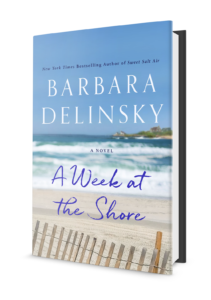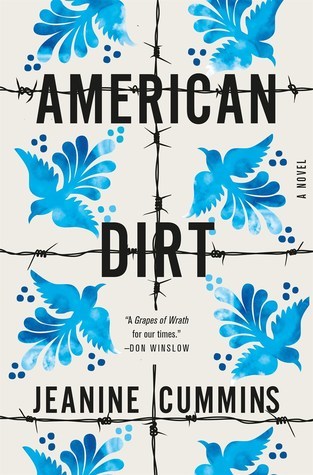Barbara Delinsky's Blog
November 5, 2020
What Zoom And Photography Have In Common
Have you ever looked at a family photo, really looked at it, and wondered why various members pose the way they do – where they stand vis à vis the group, whether their arms are around others’ shoulders or around themselves, whether their heads are inclined toward their kin or away?
How we choose to stand says a lot. This is the psychology of photography.
I’ve always been intrigued by it, and no wonder. I was a psych major in college, and, soon after graduation, took up photography. My books often mention the psychology of photography, most recently, A Week at the Shore, in which annual Fourth-of-July photos lining a stairwell tell stories about family members and their place in the group.
Lately, our faces are often captured on Zoom. I use this videoconferencing platform often, not only to enjoy virtual wine and cheese with other couples, but for long heart-to-hearts with a girlfriend, for telehealth visits with doctors, and for online courses (like studying the works of Jane Austen, which I love).
When it comes to family gatherings, my crew has used zoom for birthdays and holidays, and will likely do so again for Thanksgiving.

Passover 2020
That said, you don’t have to use Zoom yourself to appreciate this blog. Picture the screen on your device filled with little boxes of faces. Picture how each face appears.
Is it centered?
Well-lit or shadowed?
Cut off?
Distorted?
Smiling?
Scowling?
Please remember that the person using the device can see her own face and, therefore, knows how others see her. For this reason, we have to assume she has at least some small choice in how she appears.
I’m not talking here about backgrounds, such as those of celebrities in entertainment, news, or politics. Their backgrounds are as carefully curated as their clothes. Politicians, for instance, want a flag, a campaign banner, or a crowd of adoring supporters behind them. Entertainers, news icons, even authors are different.
Some put themselves before shelves of books for an intellectual look, some play chic with a single piece of art and a plant, others go worldly in front of a window with a gorgeous view.
For now, though, forget backgrounds. Forget celebrities. Let’s talk about the way we everyday people choose to show ourselves on the screen. I’ve done enough videoconferencing to have seen a lot – and, in fairness, many of the people on my Zoom screen are well-placed, well-lit, and engaged. I’m guessing that’s how these folks are in real life.
For the sake of this blog, though, let’s focus on the others. Inevitably, there are one or two on a screen of ten who are either amusing, puzzling, or downright annoying.
Let’s consider what that says about them.
1. The Cornered One
She positions herself in the very lowest corner of the screen so that only her head shows. I can only assume she wants this because it would be simple to turn her device a tad or move over a bit or sit on a cushion to hit the middle of the screen. But no. Week after week, she chooses her corner.
The psychologist would say she is self-conscious and shy. She doesn’t like having her picture taken, doesn’t particularly want to be seen. Oh, she could go to non-video mode so that only her name shows, but she worries this will be too obvious. So she clings to her tiny distant corner.
2. The Skulker
This one comes and goes, allowing only the hair on the top of her head to show until she is ready to talk, at which time she readjusts her device to show her whole face. Since she returns to the other as soon as she’s done, we know that her top-of-the-head view is deliberate.
This speaks of a person who wants to see everyone else without giving them the courtesy of seeing her. The rest of us may be vexed. I mean, you either participate, or you don’t, right?
3. The Dark One
Her face is in total shadow, while bright lights glare behind her. To be fair, this person may not understand how camera lighting works. If a device perceives a large amount of bright light, it will shut down a little for a better rendering of that background. If you happen to be in the foreground, you will present as dark.
Many a time, others in my Zoom groups have directed this person to either close the blinds in back or turn on a lamp in front. If she does it this once, then returns to darkness the next time, we know it’s by choice. Poor thing. She is that insecure.
4. The Bored One
You guys know who you are. You’re the ones who think we can’t figure out what you’re doing when your eyes are downcast all the time. You’re texting, emailing, or surfing. Honestly, this offends us.
As for the person who takes to swaying from side to side, while we’re not offended, we’re simply distracted. Stop. Both of you. Please.
5. The Oblivious One
Here’s the guy who positions himself two inches from his screen, perhaps so that he can see better. Unfortunately, all we see is his bulbous nose. He can’t be so near-sighted that he doesn’t realize this. Or maybe he thinks that thing on his screen is … is a computer glitch?
Whatever, he is short-sighted in that other sense of the word, too. He isn’t considering others. He refuses to see that our view is disgusting. Apparently, he doesn’t care. Good for him. Bad for us.
6. The Sleepy One
Do we actually hear snoring? No, but I’ve seen a head or two fall to a chest or two or, worse, fall back with an open mouth. This has happened in the middle of one of my courses, and it’s all I can do not to laugh. A milder version of this is The Sloucher, who lounges back in her chair through the meeting.
Unfortunately, if she’s using a laptop, what we see most is the bulge of her belly. Worse, maybe, her crotch. Not. Pretty. Clearly, like The Oblivious One, she doesn’t care. I wish I didn’t. Seeing her, I put back my shoulders and sit straight.
7. The Scowler
The Scowler is earnest. She is listening and concentrating and trying to ingest every last bit of information from the session. We can’t fault her. We just wish she were enjoying herself. Because here’s the thing. We want people to be friendly. We want to feel as though our time with them on Zoom is akin to being in a living room with them.
This is why I, for one, try to be the following.
8. The Smiler
This Zoomer is happy to be there, happy to interact with others, even if virtually, happy to be discussing or learning or just being. The Smiler may not be a natural smiler; Lord knows, I’m not. My natural expression, which I inherit from a somber dad, is serious. When I’m on Zoom, though, I see myself as others see me and consciously smile.
If you do Zoom, have you seen other quirks on your screen? If so, what are they? Feel free to comment below, so I’ll know I’m not the only grinch out there.
***
Mailing List
Name
First
Last
Email*
Connect with me on social media: Twitter, Facebook, my Street Team (click to join for fun, exclusive things I’m dreaming up), Pinterest, Instagram, and that’s it for now. I need time to write my books!
You can now order my newest release A Week At The Shore here!
The post What Zoom And Photography Have In Common appeared first on Barbara Delinsky.
September 30, 2020
What To Do With The X In The Corner
Do you search the web for bits of information? I’m constantly doing it for work. Take today.
One of my characters had too much to drink last night and woke up with a hangover. What to do? I’ve never been hungover myself. I’ve been tipsy, and know what that’s like, like I’m not in full command of my body or mind. Control freak that I am, I’ve never wanted to go any farther in that direction. So I don’t know what my character was experiencing and needed information on what she felt, e.g., I needed to know the symptoms and cures.
Google was happy to tell me where to go for answers, offering multiple sites and multiple lists. I tried the best known and most reliable sources first – and invariably, after reading the first paragraph of a piece, was stopped by a pop-up asking if I wanted to subscribe to a newsletter. No, I did not. I just wanted to continue reading. So I looked for the little X in the corner to close the popup.
It wasn’t easy to find. It was pale, often just a shadowy letter, maybe even tiny, in a corner that was nearly the same color as the X, making it harder to see. No doubt, this is intentional.
And I get it. My own website has a pop-up asking the visitor to join my mailing list. The difference is that a simple click on the page you were visiting erases the pop-up.
Wait, Which Corner?
Having to search for the X in the corner is something else. It happens all the time when I’m playing Sudoku on my phone and, before, after, and between games, an ad appears. I know that this is the price to pay for using the free version of the app. But finding the X to close it out is nearly as much of a game as the game itself – the new Where’s Waldo, euphemistically speaking.
Sometimes it’s in the upper right corner, sometimes in the upper left corner. Sometimes it doesn’t appear until a scroller counts out ten, fifteen, even twenty seconds. Since the ad is always for another game, the X may be embedded in a forest of trees, a mountain of gold, or a muddy bog. You do have to search.
And what if there’s no X at all? This happens sometimes. Another example from my work? Prior to my character getting drunk, she was sitting at a bar, ordering off the menu there that included avocado bites. At least, that’s what I called them. But I needed to find out the ingredients because at least one of you will ask for a recipe if avocado bites make it into the final version of the book.
Google offered recipe options. I sampled several. One or two were blocked by a pop-up that wouldn’t go away. If I didn’t sign onto a mailing list, they wouldn’t cough up the recipe.
Fine. Good. I left the site without and simply went to another.
It’s the cost of doing business. But boy, can it be annoying. That said, annoying is a state of mind. So yes, I’m taking that hidden X in the corner as a challenge. When I finally find it, I feel that little bit of victory.
Take that, X.
The post What To Do With The X In The Corner appeared first on Barbara Delinsky.
August 30, 2020
Mask Fun
Please. No bickering about the title of this blog. We all know that COVID-19 is nothing to laugh about, not with so much illness and death. But during the years I fought Breast Cancer, I learned the importance of positive thinking. I’d make the lemons-to-lemonade argument if it weren’t so clichéd.
So how’s this: When life gives you a rainy day, play in puddles.
Traditionally, play for me means shopping. Call it a fault, even an illness, but there it is. Pre-COVID, I’d reward myself after a morning of writing with a trip to the mall. I haven’t yet been back there, but that isn’t to say I haven’t shopped. Many a morning when I need a break, I pull l up my favorite stores online and browse New Arrivals. I may put something in my cart, or not. Inevitably, I exit. What’s the point in buying a silk blouse or a new pair of shoes when I’m not going anywhere special?
Masks are another matter.
The first time I wore one out of the house, I felt like a freak. It wasn’t Halloween, just a Sunday morning at the supermarket, and not everyone was into it. But COVID was lurking, and medical experts pointed to mask use as one way to limit the spread, so there I was. Those first masks were disposable paper ones with pleats. To this day, I find them to be great for my purse or the glove box, easy to put on, take off, and toss out.
But what fun is there in a paper mask?
I’ll bet many of you make masks yourselves, and I’m in awe of you for that. I actually did buy yards of elastic and designate a few old tee-shirts for the cause. But I had neither the skill nor, in truth, the interest in making my own. I wanted to buy. I could afford to do it. I liked the idea of supporting independent craftspeople (think Etsy), many of whom donate one for every few sold.
So the shopping began. And I did make some early mistakes. Take the ultra-thin cloth masks, the single-layered ones with patterns of bees or cats on the front, soft and comfy, and easy as pie to breathe through. Sadly, studies ranked them poor for protection.
Same with gaiters – and oh, what a disappointment that was. I thought I’d found the answer to walking outside. A gaiter was comfortable and convenient lying around my neck, easily lifted when another person approached. Turns out, the gaiter’s single layer of miracle fiber actually breaks the droplets into smaller bits that spread worse than ever.
Bandanas aren’t much better than gaiters. Since they’re open at the bottom, they don’t hold droplets in, but send them shooting under and out. My hairdresser insists on wearing one. And he talks non-stop. Not good at all. So. When I go to the hair shop – which is far less often than I used to – I wear my sturdiest mask with a tea filter inside as an extra layer.
Okay, you’re asking, waiting, where’s the fun?
Patience, please. Let’s be practical for one last minute. Consider fit. I get the best fit from a pleated cloth mask. It’s made of multiple layers of fabric, some cotton, some polyester, so it’s protective. I prefer elastic ear hooks, rather than bands that go around the back of the head. Oh, and I like a nose wire. I do wear glasses into the market, and the nose wire helps with both fog and fit. I’ve seen masks that are snout-like, leaving more room inside to breathe. This isn’t my problem. But if it’s yours, a snout mask may work.
Yuck. Snout mask? Fun, please. Fun.
Okay. Here we go. My mask collection resides in a basket in my laundry room, easily accessible as I’m leaving the house.
Which mask I choose on a given day depends on my mood, on what clothes I’m wearing, where I’ll be going, who I’ll be seeing, or whether it’s a mask-message day. There are lots of options.
For starters, because I’m a black pants addict, there is urban chic. We’re talking a black mask – or gray or ecru – for serious outings, like going to the dermatologist. That means sedate and down to earth.

Conversely, if I’m going to the supermarket, I’m light-hearted. I like the supermarket, always have, and since it’s become the major outing of my week, I lift my own spirits with a colorful statement. I’m talking blue-and-white checks, red polka dots, neon green, a handsome plaid, or rainbow stripes.
When I’m walking outside, I’m either missing my gaiter, wearing a random mask on my chin until a person nears, or fully masked with something like seersucker.

For a national holiday, like Memorial Day, Fourth of July, and the upcoming Labor Day, I go patriotic. With an election in sight and the need to vote oh-so-important, this resonates.

For a loud fashion statement, I go with glitter. LOVE my glitter masks.

Then there’s the midnight sky of the serious woman, the author who is writing her next book and wants to be in the mood. Or starbursts for the woman who craves inspiration. Or a calming lavender for a day when the news stinks.

Oh, and did I mention batik? That’s the one at the top of this blog and it’s my new favorite.
As for color coordinating, I do love Nancy Pelosi’s masks – which, too, have evolved from scarves to better face coverings. She walks the walk as she talks the talk, though I’m not sure she’s having fun. I wouldn’t want to be in her shoes these days.
Me, I am having fun, definitely playing in puddles. You can’t always see my smile behind the mask. But it’s there.
The post Mask Fun appeared first on Barbara Delinsky.
April 25, 2020
Discovery in the Time of COVID-19
We live in an interesting time, such a different life now from before. But not all of the changes have been bad. Granted, my family is well, so I’ve been spared the worst. Likewise, employment. I write every morning, same as always.
Not everyone is as lucky. My heart aches for those whose losses have been so much greater. A life lost is gone, but I pray that lost livelihoods do eventually return.
Other things I pray do not. For starters, I’ve discovered …
Family and Friends.
I miss them! Only now, when I can’t see them in the flesh, do I realize how much. It’s like I was caught up in a rushing current. Then, suddenly, the water stilled. In the stillness, things deep down are suddenly visible. Yes, I need to know that friends and family are well.
But I’ve found I want more. I want to spend time with these people in ways that the rushing current has let slip – and a quick text doesn’t do it. I need face to face. Two of my three sons are out of state, as are many of my friends, and yet we’ve discovered we can be together. How? I’ve discovered …
Technology.
Specifically, video calling. I hadn’t used it before now, but what a discovery! Not only was my family together for the recent holiday, all seventeen of us in three different states, but I’ve reconnected with family and friends whom I hadn’t seen in too long. My monthly cousins’ lunch has enlarged to include cousins from Florida and Virginia.
My book group now includes several past members who’d had to drop out because they moved away. Drinks with friends in North Carolina, dinner with friends in New Hampshire, wine and cheese with friends who live ten minutes away? It’s all good. Among other things, we share tips on ways to survive isolation. One I’ve discovered is …
Small Businesses.
Used to be, the instant I wanted certain things, I would log on to the mega-guy who offered free two-day delivery. Suddenly, thanks to the pandemic, delivery slowed and items were either back-ordered or out of stock. So I began exploring smaller vendors, some being the maker of the item – and found that many offered free delivery that, okay, took 3-4 days, but that’s fine.
I like supporting the little guy. Shame on me for not doing this before. So I’ve said on the phone many times now, leading to another discovery …
Walking With My Sister.
Self-isolation isn’t all fun and games. There are times when I’ve needed to vent about supermarket lines, government corruption, and, yes, even my husband hogging the red popsicles, leaving me nothing but orange. A sister offers the best ear for venting. She knows who you are and where you come from. She doesn’t judge. She is as unconditional in her love as anyone other than our mother, who is long gone. My sister and I used to talk once or twice a week. Now it’s every morning.
After working for a spell, I put on sneakers, plug in my air pods, and give her a call. As we talk, I walk in my basement and she in her house. The time is special. More, it’s therapeutic, not to mention that we walk longer than either of us would if alone.
Not so long ago, the time spent in this would have made me nervous. After all, I had to shower, eat breakfast, and return to work – because, seriously, I had a schedule to maintain.
In the last few weeks, though, I’ve had the pleasure to discover …
No Schedule.
The coronavirus has broken the momentum. Pre-COVID-19, I’d have worked through the morning, then taken a prescheduled mid-day break – perhaps like going to the dentist on Monday, to girlfriends’ lunch on Tuesday, to tennis on Wednesday, to the hair or nail shop on Thursday, to the supermarket on Friday, or some such.
Now that there’s no leaving home, time is fluid and, lo and behold, I’m liking the relaxed nature of that. I don’t miss running around. Yes, I’m looking forward to playing tennis or meeting a friend for lunch again, but I don’t want to go back to a rush of events so consuming that I lose some of the small things I’ve discovered, like …
Cantaloupe.
I mean, whole cantaloupe. As one who hates food preparation, I’ve always gravitated to precut melon. But I’m only going to the supermarket every other week now (another discovery there, having plenty of food with fewer visits), so I want something that lasts.
If I buy two big melons and leave them at room temp until they ripen, I have the sweetest fruit at a fraction of the cost. Moreover, I’m able to use up the more perishable fresh fruits, like berries, before cutting into the first of the melons, meaning that I have fresh fruit longer during that two-week span.
I still hate chopping. But if I listen to an audiobook while using my little melon baller, the time flies, and I get four fab desserts, which compensates for one last discovery …
My Roots.
Not the genealogy ones. The hair ones. And they’re white. White. Okay, so this is one discovery I can do without.
But the rest? Not bad at all.
***
Connect with me on social media: Twitter, Facebook, my Street Team (click to join for fun, exclusive things I’m dreaming up), Pinterest, Instagram, and that’s it for now. I need time to write my books!
Before and Again is available everywhere. Click here to purchase! AND you can now pre-order my upcoming release A Week At The Shore here!
The post Discovery in the Time of COVID-19 appeared first on Barbara Delinsky.
January 26, 2020
What Happens When a Novel Gets People Talking?

It used to be that a good writer could write about anything, that a novelist could interpret reality in the way she chose, that a publisher could publish any book that was intelligent, relevant, and well-grounded. But have the rules changed? In this day and age of PC to the extreme, can only a rape victim write about rape or a Jew write about the Holocaust? Can only a gun owner write about gun rights, or the parent of an autistic child write about autism?
I haven’t blogged in nearly eight months, in part because I’ve been busy writing other things and in part because I didn’t feel I had anything to blog about. That changed with the publication of AMERICAN DIRT, by Jeanine Cummins.
What Readers Are Talking About
I received an advance copy of this book from my editor, who knows my taste in reading and thought I would like it. Honestly? I was blown away. The subject (Latino migrants making the perilous journey to the United States), the main characters (a desperate Mexican mother, two Honduran sisters), vivid settings, flawless pacing, heart-pounding situations, and the power of the author’s prose made this as good as any book I’ve read of late.
Not everyone agrees. Since its publication, there’s been a huge uproar from those who feel that it misstates the immigrant experience, that it panders to stereotype, and that, since it was written by a non-migrant, non-Latino woman, it has no value. Social media has provided a platform for the frenzy, particularly now that Oprah has chosen it for her latest book club pick.
My Own Brush With Controversy
Having been the butt of similar criticism, I take this issue personally. Do any of you remember FAMILY TREE? In it, I created a white couple who gave birth to a black baby. The book did phenomenally well and sparked amazing discussions. While on tour, I met many African Americans who said that I had told their story in this book. At the same time, the nay-sayers asked, What made me think that I could tackle this subject? I was white!
My answer was the same then as now. I wrote FAMILY TREE with no pretense of being anything but what I am. I had a publishing platform and an interest in this subject, and I researched up the wazoo to get it right. My book is told from the POV of the parents and grandparents of this child, all of whom are white. Had this same story been written by a black writer, it would be different. I invited my critics to write their own books on the topic.
Isn’t Talking About Controversial Issues A Good Thing?
I say the same to the critics of AMERICAN DIRT. A novelist comes at a book from a point she chooses. That is her right. Mind you, I don’t know Jeanine Cummins. But at the end of her book, she offers a detailed account of how she came to write AMERICAN DIRT and the efforts she made to get it right. It sounds to me like she acted in good faith. Whether you agree with her approach or not, she has certainly gotten people talking about the immigrant experience.
Can we all agree that’s a good thing?
I’m a strong advocate of political correctness. But I’m an even stronger advocate of free speech. So yes, the critics can have their say. I simply wish they would respect Ms. Cummins’ right to it as well.
Feel free to comment. I’d love to hear your thoughts.
***
Connect with me on social media: Twitter, Facebook, my Street Team (click to join for fun, exclusive things I’m dreaming up), Pinterest, Instagram, and that’s it for now. I need time to write my books!
Before and Again is now available everywhere. Click here to purchase! AND you can now pre-order my upcoming release A Week At The Shore here!
The post What Happens When a Novel Gets People Talking? appeared first on Barbara Delinsky.
June 2, 2019
How To Pick A Setting For Your Book
Here I am again, having just finished writing one opus and now contemplating the next. Where to place it? Where would you set your book, if you were to write one?
I’ve been writing about New England pretty much since the start of my career. There were a few exceptions years ago when I set one story in Brazil, another in North Carolina, another still in the Caribbean. And then there’s a break-out book for me, COAST ROAD, which is set in California’s Big Sur. Since my husband and I had vacationed there many, many times, I knew the area well. That leads to my first point.
1. Pick a Place You Know
If writing is about painting a picture with words, the picture must be in your mind first. Personal experience helps with that. Ever hear the old rule, write about what you know? That applies to location as well. If you’ve spent personal time in a place, you’re more comfortable there.
Having lived in New England all my life, I’m comfortable here. Though I’ve always lived in Massachusetts, I spent my childhood summers in Maine, my adult winters skiing at Mt. Snow or Sugarbush or North Conway, my parenting years with the kids on Cape Cod, the Rhode Island shore, or (as you can see from the photos below) New Hampshire’s Lake Winnipesaukee.


AN ACCIDENTAL WOMAN, THE VINEYARD, A WOMAN’S PLACE, THREE WISHES – I could go on and on listing books of mine that illustrate this point. Since I know these places, my comfort shines from the pages of my book.
That said, personal experience is not always possible, even within the bounds of New England. I mean, really, I’ve written more than 80 novels. Wouldn’t it be boring to keep returning to the same exact towns, even if in different states, for all of those books? Readers like variety. Well, so do writers. This leads to my second point.
2. Pick a Place Where You Want To Be
This is the fun part. Where do I want to be for the next 18 months? That’s how long it will take me to plot and write my next book. I’m usually at my computer with tea and my book at 5 am in the morning. How to pull myself out of bed at that early hour if not to be somewhere desirable?
If I wrote a different kind of book, perhaps one that makes a blunt statement about the human condition, it would be different. But I write books with happy endings. That’s what we all dream about, isn’t it? I sure do. Life doesn’t always go the way we want it – and my books often do deal with heavy subjects. As a writer, I have to deal with those plot arcs. But if so, I want the dealing to take place in a spot where I want to be.
I mention variety above. Fortunately, there’s great variety in New England. I try to travel to different states with each book. Since A WEEK AT THE SHORE (coming in June 2020) is set in Rhode Island and the book before that, BEFORE AND AGAIN, is set in Vermont, and the one before that, BLUEPRINTS, is set in Massachusetts, and the one before that, SWEET SALT AIR, is set in Maine, it must be time for New Hampshire, or Connecticut, or back to Maine. Or so my thinking goes.
Do you have a preference?
And there you go, my next point.
3. Pick A Place The Reader Will Enjoy
You like to lose yourself in a book. So do I. How better to do that than to be somewhere you’d like to visit? Our world can be ugly. Often we’re stuck in places we don’t want to be. All the more reason to escape to a spot where you can breathe, one that is appealing and hopeful, even if that means a fixer-upper in the middle of nowhere, as Caroline and Dean do in BLUEPRINTS?
So, I pick a place that I love and then pass the love on to you – which leads to reader tours. I’m a Game of Thrones fan. Would I love to visit some of the locales where various scenes are set? You bet! Same with Downton Abbey and Outlander. So I totally understand – and love it – when readers tell me that they’ve taken the SWEET SALT AIR tour of the Maine islands or the LAKE NEWS tour of New Hampshire towns.
Not that I can pick any random place – although, come to think of it, closing my eyes and pointing randomly to a map of New England and then setting my story there might be an adventure.
And that leads to my final point.
4. Pick A Place That Fits The Plot – or Make The Plot Fit The Place!
If I’m writing about a family gathering during the summer (A WEEK AT THE SHORE), a beach locale like the Rhode Island coast is perfect. Here’s my family – well, six of the youngest – two years ago in just that spot, having converged there to celebrate a big anniversary with my husband and me.

Or, if I’m writing about a woman who just up and runs away from an unhappy life in Manhattan (ESCAPE), an off-the-beaten-path Vermont town works. If I’m writing about a woman who inherits an elegant townhouse from her late estranged father (FLIRTING WITH PETE), Boston’s Beacon Hill fits the bill.
Conversely, when it was time for me to set a book in New Hampshire, where there is a significant history of granite quarrying, I consciously built a plot using that activity as a centerpiece of THE PASSIONS OF CHELSEA KANE.
And now, here we are in June of 2019, with BEFORE AND AGAIN newly released and on sale everywhere and forever, in trade paperback. This is my very favorite format, in that it’s affordable, easy to hold and read, and beautifully packaged.
The setting of this one is a fictitious town in Vermont. I’ve called it Devon, but its model is Woodstock Why? Because my husband and I have been vacationing there forever. Because our kids learned to ski there. Because one of our sons now owns a house there, the site of a big birthday bash for me several years ago, my happiest birthday ever.


Bottom line? Even beyond the wonderful memories I have of this town, I know the place well, meaning that I can easily paint it for you folks.
Let me know how I did, please?
In the meanwhile, I’ll keep pondering the setting of my next novel, the one I’ve yet to plot. It has to be in New England since you readers expect that from me by now.
Any requests?
Connect with me on social media: Twitter, Facebook, my new Street Team (click to join for fun, exclusive things I’m dreaming up), Pinterest, Instagram, and that’s it for now. I need time to write my books!
Before and Again is now available everywhere. Click here to purchase! 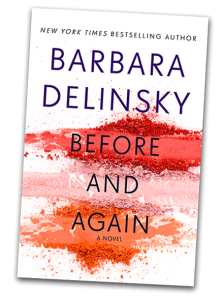
Now you can order the paperback of Before and Again. Click here to purchase!
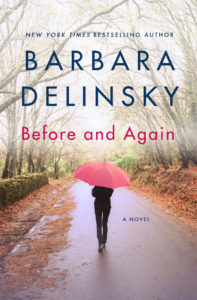
Available now!
The post How To Pick A Setting For Your Book appeared first on Barbara Delinsky.
January 23, 2019
6 Reasons the KonMari Method Does Not Work With Books

Photo credit: Barbara Delinsky
A week ago, I had no idea who Marie Kondo was. Then, after rushing past yet one more article about her now-viral KonMari Method of decluttering a home, I slowed and took a closer look.
Marie Kondo is a professional tidier-upper. The star of several books, a ton of videos, and as of January 1 of this year, a Netflix show, she is teaching the world not only to fold clothes in a way that they can be found, but to toss out any and every piece of clothing that does not ‘bring joy.’
And hey, I’m all for getting rid of unwanted stuff. I’m also all for folding clean laundry, though my kids might call me neurotic about that. Where I disagree with Marie Kondo is when she applies her method to books.
The KonMari method tells us to toss any book that doesn’t give us a rush of pleasure when we put a hand on its spine. Ms. Kondo believes that the only books we should keep in our homes should be ones that “spark joy.”
There Is More To Books Than Reading
I disagree. Here’s why.
Joy is only one reason to read. A biography teaches. A memoir enlightens. A mystery intrigues. A horror novel, well, is horrifying. And a romance can alternately warm the heart or bring us to tears of wanting. A book like Elie Wiesel’s Night brings no joy at all. But would you toss it?
Books don’t go out of style. We can’t compare them to a pair of shoes that, four years later, looks old. Every book has something new to say, regardless of when we read it, which brings me to my next point.
We have reading moods. Sometimes we want a mystery, sometimes a dissertation on Colonial America, sometimes a dystopian novel. How often have you bought a book one year, only to put it aside and then read it three or four years later? If we’ve tossed it out, we can’t read it.
Books don’t need folding. They aren’t tee shirts, but can be put on shelves, even crammed on shelves, even stood in tall piles on the floor with their spines out and visible. Yes, to organizing titles, whether by genre or TBR or date bought or even spine color. But no, to removing them. Oh, and yes, to donating them to a library sale that will benefit both the library and the new buyer. But then, when we reach for a book that isn’t there, what do we do?
Rereading. The Konmari method suggests we don’t do that. But I do. You? Have you ever read a book a second time and only then found its meaning. There is certainly joy in that. But if you deep-six it after the first reading, an opportunity is lost.
The collective factor. A collection of books is like a wall of family photos. They remind us where we were at a particular time and paint a picture of who we are now. The book collection itself “sparks joy” – or, said differently, a home without books is a cold thing indeed.
Do you agree? Disagree? All comment welcome!
Connect with me on social media: Twitter, Facebook, my new Street Team (click to join for fun, exclusive things I’m dreaming up), Pinterest, Instagram, and that’s it for now. I need time to write my books!
Before and Again is now available everywhere. Click here to purchase! 
The post 6 Reasons the KonMari Method Does Not Work With Books appeared first on Barbara Delinsky.
November 13, 2018
This is Why I Have Four Reasons For Hope
No, this is not a political blog. I’m not touting one candidate over another. The election of 2018 is over. Some races went the way I wanted, others did not.
For me, though, four things stand out.
Four BIG reasons for hope:
Women can do it. Record numbers of women ran – and WON – on issues about which they care. We still have ways to go before we have equal representation in Congress, but this is a good start.
Big money can be beaten. When hundreds of thousands of individuals chip in whatever small amount they can afford, record amounts of money pour in. And why not? Who would you rather an elected official be accountable to – a PAC or the American people?
Polls don’t matter. Yes, pollsters did better this time around than in 2016. But they still missed it in several important races, the lesson of which is that polls do not – should not – determine an election.
Good people are out there, and they’re finally getting involved. Many of these new faces ran for the sake of our country rather than power; a breath of fresh air in this.
Others have hope
Earlier today I received an email from a candidate who ran on the power of the people, grassroots all the way. He lost the election but came so far from behind, so close to winning that he will be back.
“Miss being part of something so much bigger than me or my life,” he writes. “We were doing this for one another, doing this the right way, doing this for our country.”
He goes on. “Future campaigns will be won, influenced by the one we built. Candidates will run who otherwise wouldn’t have. Some will take heart in knowing that you don’t have to accept PAC money, you don’t have to hire a pollster to know how to think or what you want to say.”
And finally, “I feel responsible to you, to our country, to my kids, and to my conscience to make sure that we continue to find a way to respond to the urgency that we still feel.”
My message of hope
On that heartfelt note, here’s one from me. I love it when you all post blog comments. But please. If you think I’m criticizing your side, reread what I’ve written here.
I believe in these United States, with its diversity of background and difference of views. That’s what DEMOCRACY means.
P.S., democracy starts at home. If you think my husband and I haven’t had hard discussions over the last few months about respect for women, think again. We’ve struggled to express different opinions in a thoughtful, respectful way. We’re still struggling. Learning to communicate about tough subjects is a work in progress.
As it is in our country.
Connect with me on social media: Twitter, Facebook, my new Street Team (click to join for fun, exclusive things I’m dreaming up), Pinterest, Instagram, and that’s it for now. I need time to write my books!
Before and Again is now available everywhere. Click here to purchase! 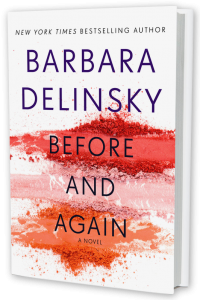
The post This is Why I Have Four Reasons For Hope appeared first on Barbara Delinsky.
September 29, 2018
My Take on Brett Kavanaugh, Christine Blasey Ford, and The Supreme Court
Is anyone out there as distraught over the circus of the Supreme Court/Senate Judiciary Committee hearing as I am?
I believe Dr. Ford is telling the truth.
I also believe Brett Kavanaugh is telling the truth. And therein lies the absolute tragedy of yesterday’s testimony. He honestly doesn’t think he did anything wrong. He does not consider what he did to Dr. Ford to be sexual assault; nor does he consider the other sexual misconduct allegations against him to be sexual misconduct. He believes he had a right to do what he did and that anyone who suggests otherwise is a national disgrace.
Totally aside from the issue of whether his combative and partisan behavior is fitting for a nominee to the Supreme Court, consider this gender problem. Brett Kavanaugh is furious that a woman has dared try to take from him the one thing he wants most in life.
Well, what about Dr. Ford’s mental health? What about the way Brett Kavanaugh’s behavior years ago so brutally shaped her life? What about all the other victims of sexual assault who feel they’re being discarded right along with her? Will the new pain Dr. Ford and those others suffer now accomplish anything?
Certainly not in getting Brett Kavanaugh to take responsibility for what he did. He will not own his own behavior, much less acknowledge an injustice toward women that has been going on forever. Nor will any of the other men who vote for him in the full Senate. As for the women who vote to have him confirmed? I simply, simply, simply do not understand.
Let me be clear: I had doubts about Brett Kavanaugh before the sexual charges surfaced. I thought statements he made earlier in his career to be angry, certainly not the measured and thoughtful approach of a Supreme Court Justice. I sensed he was playing with words in many of his denials, for instance, with regard to upholding Roe v. Wade. Put bluntly, I wondered if he was lying. I heard arrogance and partisanship. And I disliked the way he paraded his wife and daughters as props.
Yesterday’s spectacle has turned this into a male-female issue. Senators Grassley and Graham made it quite clear, prior to yesterday’s hearing, that Brett Kavanaugh was their man regardless of what Dr. Ford said. Her words, thoughts, feelings didn’t matter. Donald Trump implied the same. Nothing matters more to him than the victory of getting his nominee confirmed. But hey, our president doesn’t think he did anything wrong in any of the many allegations of sexual misconduct against him, either.
She lied. How many times have we heard this refrain from men like Kavanaugh, like Trump, who dismiss charges of sexual assault by dismissing the accuser? Empirical research shows that only 2-10% of these charges are false. Which leaves 90-98% that are true. And that’s not counting the women who suffer sexual assault and never report it.
An FBI investigation was surely called for here. And we do have one coming, albeit of “limited” scope, says our president, which means whatever he decides it does. But why the initial pushback by the Republicans? The circumstances of this case are unique; the Supreme Court is the highest court of the land, and an appointment to it is for life. Given the charges against this nominee, an FBI investigation is totally appropriate.
I would have thought Kavanaugh would have wanted it from the get-go, solely to clear his name. But he didn’t want the FBI involved. What is he hiding? Republicans on the Senate Judiciary Committee refused to release tens of thousands of pages of information on him. What are they hiding?
I do believe that this man will be quickly confirmed as a Justice of the United States Supreme Court. I also believe that his appointment will tarnish the reputation of the court for years to come.
Worst of all, his appointment leaves women in the mud, trampled on once again. How do we get out? Is there no leader out there brave enough to speak up? Please. Name that person. Give me cause for hope.
Well, here is one. THE VOTE.
If you take anything from this blog, it is the importance of voting in the mid-terms. An argument can be made that if fewer registered voters had sat on their hands in November 2016, the fiasco of Donald Trump would have been nipped in the bud. But it wasn’t. And we now have three branches of government that are staunchly Republican.
This is not healthy, certainly not what the Founding Fathers wanted when they talked about control and balance. One of these branches must be Democratic. With the extreme partisanship of the president and, now, the politicization of the Supreme Court, Congress is our only option.
Please know this: I’m not advocating a blind vote for any female on the ballot. I’m the mother of three grown sons, any of whom would lead this country in a more caring, intelligent, and inclusive way than what we see now. None of my three are interested. They work in health care, education, and law, each doing his part to benefit society in a more hands-on way.
Nationally speaking, though, I beg you to go to the polls this November and vote for the sanest, most sensitive, and most insightful person, be that person female or male.
We need someone who champions women’s rights, common sense gun control, and the importance of immigrants to the American soul.
We need someone who believes that government should be the safety net for people in need, someone who believes that every American has a right to the same health care as members of Congress.
We need someone who will fight for term limits for Supreme Court Justices, term limits for those in Congress, term limits for membership in Congressional committees.
We need someone to spearhead a move to Abolish the Electoral College, which negates the votes of millions of Americans.
We need someone to sponsor making Election Day a Federal holiday and, if not penalizing eligible voters who do not vote, certainly rewarding those who do vote.
These are steps in the right direction. I’m sure there are many, many others. Who will fight for them?
One last thought, actually an addendum to the warning I posted at the start of this blog. I didn’t go into writing for the sake of having a soapbox. My books aren’t about politics. The last thing I wanted was to inject it so bluntly into this page today. But America is at a tipping point such as I’ve never seen in my life. Sitting on the sidelines is no longer acceptable.
We all need to speak out. I can do that on a blog. I will also do it at the ballot box.
You, too. Please vote!
Connect with me on social media: Twitter, Facebook, my new Street Team (click to join for fun, exclusive things I’m dreaming up), Pinterest, Instagram, and that’s it for now. I need time to write my books!
Before and Again is now available everywhere. Click here to purchase! 
The post My Take on Brett Kavanaugh, Christine Blasey Ford, and The Supreme Court appeared first on Barbara Delinsky.
September 14, 2018
How to Write Like Delinsky: Five Rules Of Writing
 Some things are ingrained from childhood. One of those, for me, is the start of the school year. New clothes, new books, new classes, new rules – I may have outgrown the first three, but the part about rules never leaves. So I start off the 2018-2019 learning year with FIVE Rules of Writing.
Some things are ingrained from childhood. One of those, for me, is the start of the school year. New clothes, new books, new classes, new rules – I may have outgrown the first three, but the part about rules never leaves. So I start off the 2018-2019 learning year with FIVE Rules of Writing.
If you think they’re just for you, think again. I’m heavily into writing my next book, so they’re absolutely for me, too.
DO YOUR HOMEWORK
The old rule of thumb is to write what you know, which is fine and dandy until you’ve written a dozen books and “what you know” is feeling used up. At that point, you turn to something new and quickly realize that writing “what you know” is a cinch by comparison. I have faced this situation dozens of times, and while I do fall back on the familiar every few books, like photography, there has to be more.
The key? Research. No, no. Don’t moan and groan. We’re long past the days when research had to be done in the library or, worse, by snail mail. Now it’s about googling, reading blogs, and emailing resources. I’ve learned about raising Angora rabbits, designing a home, sculpting a teapot. I’ve learned about health issues, like MS, infertility, brain injury, and Alzheimer’s. For my current book, I’m researching beach erosion and the life of a veterinarian.
Yes, that’s researching, present tense. It’s important to research major elements before you start to write since the results of what you learn can impact your plot. But as new things crop up in the course of the writing, as they have in my WIP, I do more research. Just remember. Make a mistake, and some reader out there will catch you, no matter how many disclaimers are in your Acknowledgement page.
CREATE LIKEABLE CHARACTERS
The reader has to want to read on, and for that, she has to care. Creating characters who are likeable can make that happen. When I think back on books I’ve read in the last year and hated – even audiobooks I’ve started and then actually returned – it’s because I found the main characters so unpleasant that I couldn’t have cared less. To the contrary, put a sympathetic character in an untenable position, and the reader is hooked.
Please don’t misunderstand me. Main characters shouldn’t be perfect. We identify with them far more if they’re flawed, since we’re flawed, too. But there’s sweet, quirky, or shy, and absent-minded, severely near-sighted, or logic-challenged, any of which can be endearing. There’s nothing more addictive than being introduced to a character we like and then having the author pit that character against an enemy.
There’s a fine line between a sympathetic and annoying. Occasionally, I’ve crossed it without meaning to. This happened with Sweet Salt Air, which was wildly successful in its final form but might not have been if the first draft had gone into print. Of the two friends around whom the story is told, Charlotte is one who made a moral faux pas years before, but Nicole was the one my editors disliked. She was too self-absorbed, too small-minded, they said. And they were right.
So I went back and altered her character at the get-go. That allowed me to give her moments of self-absorption and smallness, but the readers liked her. I needed to have the reader care enough about Nicole, warts and all, to keep reading.
GIVE EACH SCENE A PURPOSE
I recently read a book where the only purpose of several lengthy passages was to showcase the authors’ exquisite prose. And that’s fine if that’s what your readers want. Mine do not. I’ve written scenes that I thought were brilliant in a literary sense, only to realize that they lacked purpose and were instead a distraction that broke the momentum and diluted the plot.
How to avoid this? Part of it can be done at the planning stage. As I plot the general course of the book, I list scenes that will move the plot forward. The greater part, though, has to be done as I write. At the end of a work day, as I reread, I try to be critical. If what I’ve written doesn’t add something to the book, it has to go.
Cutting is painful. Deleting what you’ve sweated to create is every writer’s nightmare. But it matters. Take Family Tree. Only after I’d finished writing the whole thing did I realize that several chapters were superfluous. My editor agreed. I deleted whole chapters. The entire manuscript actually went from 450 pages to 350. And the book is stronger for it.
So please. Don’t waste the reader’s time. Make each chapter count. A reader who skims is a reader who will not buy your next book.
MAKE IT MOVE
This is about speed, rather than content, as in the point above. It’s about pacing. Your plot has to go somewhere, and it has to go there in a timely fashion. Today’s reader is used to non-stop, heart-thumping speed. A suspense novel offers that, which perhaps accounts for the rise of the Gone Girl genre.
But my books aren’t suspense novels. They are emotional family dramas, and family dramas can unfold in ways that are slow and cerebral and dense. That said, if I want to attract a larger audience, even some of those women who also like thrillers, my plot has to move.
Two things can help. First, a vehicle to carry the plot along. Take Before And Again. The plot centers on a woman who has lost a child and is trying to move on with her life, only to have the past keep popping up when she least expects it. This book has a main character, her mother, her brother, and her ex-husband, plus lots of anguished discussions with each.
But I needed a vehicle. So I gave my protagonist a friend with a legal issue that involved media attention. Legal issues allow for reveals at pivotal moments. Hence, my vehicle.
Second, a cliff-hanger … or twenty. I’m actually going to devote an entire blog to this, so if you’re interested, check back in another week or two. But the issue here, really, is where to end a chapter. I love it when readers comment that they couldn’t put my book down. Part of that is because I end a chapter in a way that raises a new question that can only be answered by moving right on to the next chapter.
EDIT FOREVER
Well, maybe not forever, but certainly either until you know that what you have is the best you can possibly do, or until you run out of time. I started writing when an electric typewriter was state of the art. Now, with computers making adjustments and improvements easy, there is no excuse not to do it.
And it’s constant. There is no first draft or second draft. If a draft counts each time I make a significant change, I do hundreds of drafts for each book.
What do I edit?
Words, sentences, paragraphs. I may not be a wizard of literary prose, but I like what I write to have rhythm. When I first started writing, I attended a signing for a favorite author. When I finally reached the head of the line and gave the author my book to sign, I told her that I loved her work because it flowed. I’m not sure she understood what I meant. I suspect she was just thinking about how much longer she had to stay.
But the flow of that author’s words was a model to me that I follow to this day. When I edit, I go for flow.
I edit to streamline. Why use three adjectives when one is far more effective? Of course, that one has to say it right, so I edit it until I like the one I have.
I edit to correct typos. And even then readers catch a few.
I edit to eliminate repetition. Maybe it’s just a pet peeve of mine, but I hate reading a book in which events are repeated each time a character talks with a different person. The author (me!) may not realize it’s happened until she rereads the whole book.
I edit for inconsistencies in the spelling of names, eye color, chronology. Granted, I have a copy editor whose job is catching these, but for me, it’s a matter of pride to turn in the best-looking manuscript.
I edit for slow parts, as per #s 3 and 4 above. One thing I’ve learned over the years is that if I’m bored, my reader will be, too. The only yawns I want are from readers who are absolutely exhausted because it’s the wee hours of the morning, and they can’t put my book down.
There you go, my FIVE Rules of Writing.
Do you follow any of them when you write an email or a text? If you’re a writer, do you have any to add?
Connect with me on social media: Twitter, Facebook, my new Street Team (click to join for fun, exclusive things I’m dreaming up), Pinterest, Instagram, and that’s it for now. I need time to write my books!
Before and Again is now available everywhere. Click here to purchase! 
The post How to Write Like Delinsky: Five Rules Of Writing appeared first on Barbara Delinsky.


